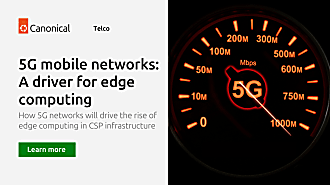Eduardo Aguilar Pelaez
on 3 April 2020
This is part of a blog series on the impact that 5G and GPUs at the edge will have on the roll out of new AI solutions. You can read the other posts here.
Recap
In part 1 we talked about the industrial applications and benefits that 5G and fast compute at the edge will bring to AI products. In part 2 we went deeper into how you can benefit from this new opportunity. In part 3 we focused on the key technical barriers that 5G and Edge compute remove for AI applications. In this part we will summarise the IoT use cases that can benefit from smart cell towers and how they will help businesses focus their efforts on their key differentiating advantage.

IoT use cases
Furthermore, the distributed nature of IoT products means that businesses, system integrators a network operators can configure Edge GPUs to help offload the computation from a wide array of IoT devices.
Orchestration of such distributed parts of the AI system is often referred to as ‘ML Ops’ and tools such as Kubeflow can help manage a complex AI pipeline with one single developer interface.
Domain driven IoT development
The possibility of renting Edge compute resources means that businesses looking to launch an AI product do not all have to build a fully vertically-integrated solution and can instead focus on their domain expertise, e.g. produce an outstanding robot arm or connected camera and simply renting compute time from an Edge GPU server provider.
Customers are embracing this compute-offloading architecture to bring AI products to smartphones, IoT devices and robotics.
The ‘5G + Edge GPU’ marriage will unlock AI solutions that will have previously not been possible.
Application domains
The Industries that will benefit from this are;
- Smart cities
- Agriculture,
- Manufacturing
- Transportation
- Retail and
- Call centers
Overall, all of these applications will benefit from;
- having computing at the edge,
- a good 5G network to connect them
- and great software to manage the whole fleets and estates of IoT devices.
Key players
Such changes in multiple aspects of the AI, telco and IoT industry will not be brought about by one company alone, as such various industries need to work together, namely:
- Silicon vendors such as NVIDIA, Intel and AMD.
- Network specialists such as Juniper Networks, Arista and Cisco.
- 5G providers such as Ericsson, Huawei and Nokia.
- IoT and robotics manufacturers such as Bosch, Riggado and Siemens.
- Public cloud providers such as Amazon Web Services, Azure and Google Cloud.
In line with its core mission, Canonical is keen to enable and accelerate the adoption of open source software.We are very excited by the prospect of helping enterprises in this space to reach their goals in the most effective, dependable and secure way possible.



